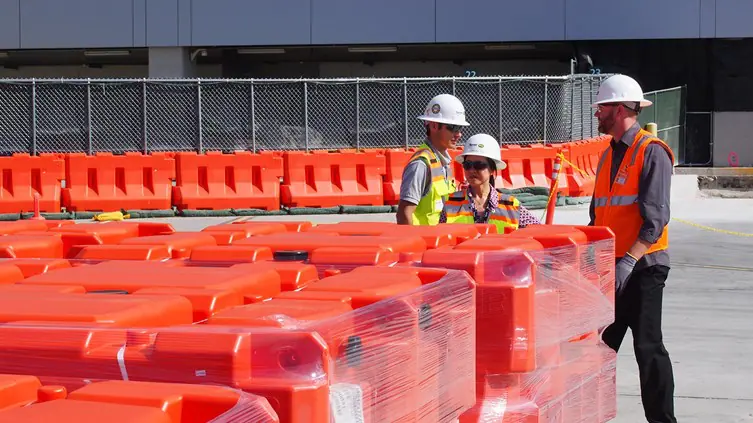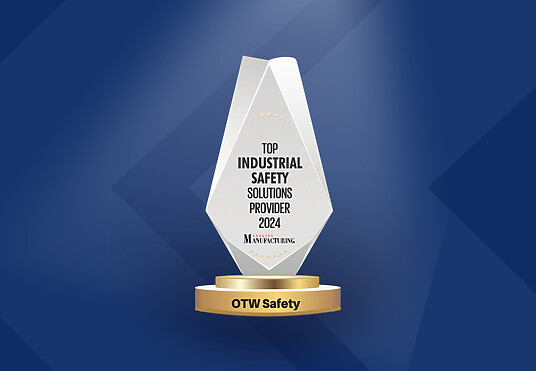Top 10 OSHA Violations

Safety in the workplace is serious business, and the Occupational Safety and Health Administration (OSHA) exists to oversee the rules and regulations that help keep safety a priority.
Their main mission is “to ensure safe and healthful working conditions for workers by setting and enforcing standards and by providing training, outreach, education and assistance”. In order to do this, businesses are expected to uphold OSHA regulations and are inspected regularly to ensure that they are fulfilled. If a company fails to adhere to regulations enacted for their business, they will receive a violation and have the potential to receive a fine, depending on the violation and the number of times it has been received.
What made it on to OSHA’s Top 10 for 2022?
There are a plethora of standards OSHA oversees, but there are a number every year that make it to their “Top 10 most frequently cited workplace safety standards” list. Released at the annual National Safety Council (NSC) Safety Congress and Expo for the fiscal year 2022, the list this year, according to OSHA, are:
1. Fall Protection – General Requirements (1926.501)
Falls made up 35% of fatal injuries in the construction business and extraction occupations in 2020; today, the numbers remain much the same. Fall Protection – General Requirements rang in at 5,260 violations (over double the violations as number two on the list) in 2022, and it has taken the primary position on the list for the last 12 years. As falls from heights or ground hazards make up the largest percentage of on-the-job injuries and fatalities (and many of the remaining top violations involve equipment related to heights), having fall protection in place is existentially important.
2. Hazard Communication (1910.1200)
All chemicals and hazardous products used by and around workers must be labeled properly, safety data sheets about each product must be easily accessible, and all employees who use hazardous products must be fully trained on proper usage. There’s a lot that goes into hazard communication, so it’s no surprise that it jumped from the number five spot in 2021 to number two in 2022. The number one reason, according to OSHA, that businesses are cited for hazard communication is due to unavailable, outdated, or missing safety data sheets.
3. Respiratory Protection (1910.134)
Violations for respiratory surged early on during the beginning of the pandemic, but has dropped over the last two years, earning its number three spot in 2022 with 2,185 violations. Respirators and respiratory protection are required in all businesses where chance of injury due to inhalation of hazardous products and atmosphere is possible. They protect against oxygen-lacking environments, harmful vapors, dusts, gasses, sprays, and more.
4. Ladders (1926.1053)
In order to maintain safety while workers are atop ladders, there are specific load requirements in place for any type of ladder you might find at a jobsite, as well as basic guidelines for use. Most violations are caused by simple misuse (standing on the top rung, etc) and mis-measurement (i.e. the wrong height ladder for a job), as well as being used for unintended purposes (like the scaffolding we’re about to discuss!). Add in the fact that fall protection (guardrails, etc.) is needed when a working height is 6 feet or more above a lower level, and you can see why ladders still remain high on the list.
5. Scaffolding (1926.451)
Of the large percentage of fall deaths in the construction industry, nearly 18% of those are due to falls from scaffolding. While OSHA regulations are clear, it can be difficult to break bad habits, and misuse (or no use) of fall protection from scaffolding is the number one reason businesses receive violations for this regulation. Safe access and full planking or decking (where workers stand on the scaffolds) follow right behind.
6. Lockout/Tagout (1910.147)
A persistent contender on the Top 10 list is lockout/tagout, also known as “control of hazardous energy” by OSHA. The basis behind this regulation is that any machinery that has the potential to create a hazard if they start up or cycle unexpectedly (especially during maintenance) must have a system in place to “lock out” the power source. Most violations stem from either having a generic lockout/tagout system (because they must be machine specific to comply with code) or failing to train workers in the systems.
7. Powered Industrial Trucks (1910.178)
Trucks in construction and industrial uses have specific design and construction requirements they must meet in order to be compliant with OSHA’s rulings. Fork trucks, tractors, and any truck that is powered by electric motors or internal combustion engines must follow these regulations. Driving too fast, moving with an elevated load, driving too close to platform edges, and failure to follow proper load dock safety procedures are the most common reasons for a citation.
8. Fall Protection – Training Requirements (1926.503)
In order to properly use fall protection, workers must be trained by a qualified individual in proper procedures for setup, maintenance, tear down, and inspection of fall protection systems – this includes nets, guardrails, personal fall arrest systems, and more. Falls, as mentioned previously, are responsible for 35% of deaths in the construction and extraction industries, and they continue to happen, likely because organizations are not doing enough training or providing enough protection, or workers are not taking it seriously enough.
9. Personal Protective and Lifesaving Equipment – Eye and Face Protection (1926.102)

Just as respiratory protection is vital when working in hazardous atmospheric conditions, so is eye and face protection when exposed to flying particles, molten metal, noxious gasses, acids, dangerous chemicals, and more. Personal protection equipment (PPE) should be a priority in risky work environments, but it remains on the top 10 list for a reason: the most common violations stem from misuse or failure to use, ill-fitting PPE, and improper storage and maintenance.
10. Machine Guarding (1910.212)
OSHA oversees many dangerous professions, and those who work with large machinery definitely make the list. To help prevent injury when operators are using such machinery, guards are required in order to ensure that any machine part, function, or process that has the potential to do harm is safeguarded. Unfortunately, the most common violations stem from unguarded or inadequately guarded machines, which can lead to lacerations, crushed appendages, burns, amputation, and more.
Safety solutions can be found.
While great strides have been and are continually being made in workplace safety, OSHA’s role in society is still a necessity – guidance, standards, training, and accountability remain much needed as organizations work towards best practices in safety.
“OSHA’s annual Top 10 list helps define trends so safety professionals can find the appropriate solutions. Despite advancements in workplace safety, we continue to see the same types of violations each year. It’s more important than ever that employers seek education and resources to keep their workers safe.”
Lorraine Martin
OTW and Safety go hand in hand!
Safety relies on the compliance of companies and workers alike – maintaining proper adherence to OSHA regulations helps ensure that employees are the safest they can be; anything less leaves room for error and injury.
At OTW Safety, we do our part by ensuring we are compliant with applicable regulations, all the while helping others stay compliant where any usage of barricades is necessary – our 100% recyclable plastic barricades are highly visible and provide maximum safety when used in a proper manner. Ground fall hazards, liability, and traffic control (among other things) all benefit from the wide variety of construction, airport, and traffic barricades that we continually strive to perfect.
Need barricades in order to stay compliant with OSHA standards?
Give us a call or contact us today!
OSHA Top 10 Violations Standards References:
https://www.osha.gov/laws-regs/regulations/standardnumber/1926/1926.501
https://www.osha.gov/laws-regs/regulations/standardnumber/1910/1910.1200
https://www.osha.gov/laws-regs/regulations/standardnumber/1910/1910.134
https://www.osha.gov/laws-regs/regulations/standardnumber/1926/1926.1053
https://www.osha.gov/laws-regs/regulations/standardnumber/1926/1926.451
https://www.osha.gov/laws-regs/regulations/standardnumber/1910/1910.147
https://www.osha.gov/laws-regs/regulations/standardnumber/1910/1910.178
https://www.osha.gov/laws-regs/regulations/standardnumber/1926/1926.503
https://www.osha.gov/laws-regs/regulations/standardnumber/1926/1926.102
https://www.osha.gov/laws-regs/regulations/standardnumber/1910/1910.212


